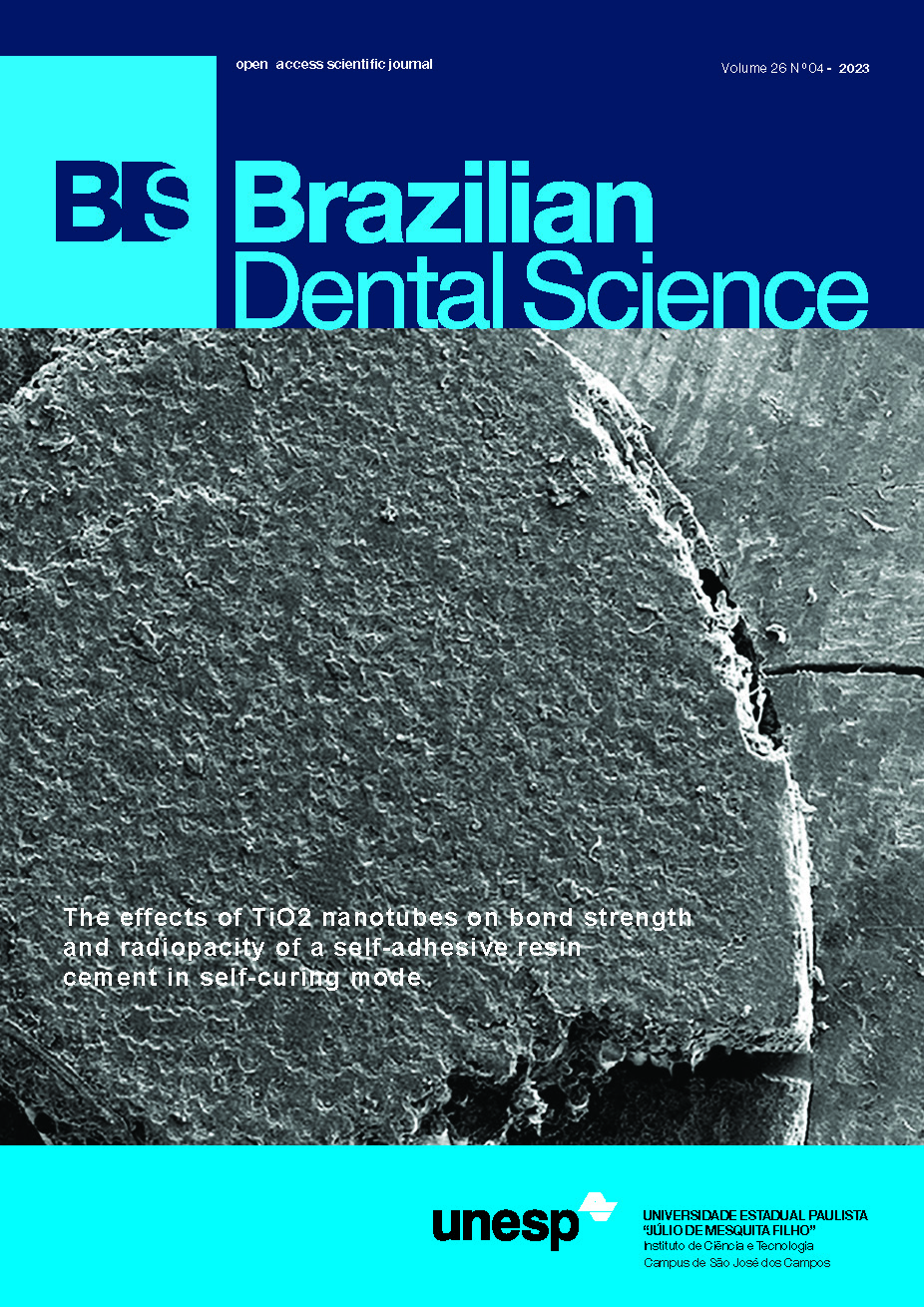Analyzing SHORE A hardness to assess the durability of soft denture lining materials
DOI:
https://doi.org/10.4322/bds.2023.e3986Abstract
Objective: Evaluate the “SHORE A” hardness in four denture soft lining materials at different time intervals. Material and Methods: Forty disc-shaped specimens, with dimensions of 15 mm × 3 mm, were distributed into four groups according to the materials: SC (Soft Confort); TS (Trusoft); UG (Ufi Gel P) and DS (Dentusoft) (n=10). The hardness measurements were performed using a portable digital hardness meter at 1 hour (h), 3 days (d), 7 d, 15 d, 30 and 60 d after preparation of specimens. The data were subjected to statistical analysis. Results: UG presented the highest hardness (39,09±2,27), followed by SC (34,36±8,52), DS (26,23±5,26) and finally TS (18,05±3,60), being that UG and TS had the smaller change in hardness between time intervals. The Repeated Measures ANOVA and Tukey’s test showed that the variables (material and time) and their interaction had differences statistically significant (p</-0.05). Conclusion: The study reveals significant variations in hardness among different groups. The groups SC and DS experienced substantial changes in hardness from initial to final values, with the group SC exhibiting the most pronounced shift. These findings underscore the suitability of acrylic materials for temporary applications. On the other hand, the silicone material (UG) with the highest initial hardness, exhibited relatively minor changes in hardness, emphasizing their recommendation for longlasting applications. Group TS, despite not being composed of silicone, also showed relatively minor changes in hardness, suggesting its potential suitability for specific applications where stability is desirable.
KEYWORDS
Denture liners; Dental prosthesis; Dental tissue conditioning; Hardness tests; Longevity.
Downloads
Published
How to Cite
Issue
Section
License
Brazilian Dental Science uses the Creative Commons (CC-BY 4.0) license, thus preserving the integrity of articles in an open access environment. The journal allows the author to retain publishing rights without restrictions.
=================




























